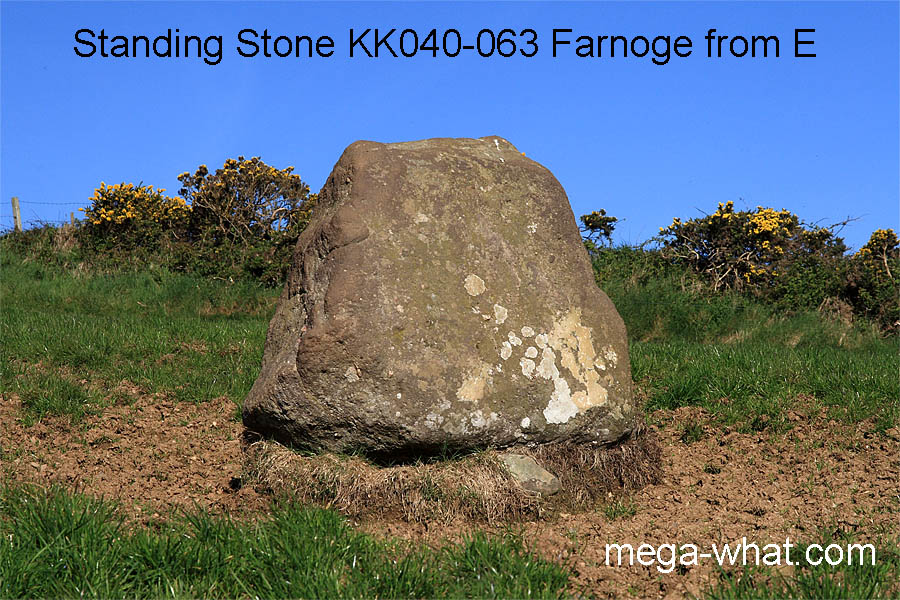 This Standing Stone at Farnoge in Co. Kilkenny is about 12km south-west of New Ross and 10km north of Waterford, on the eastern side of Tory Hill.
This Standing Stone at Farnoge in Co. Kilkenny is about 12km south-west of New Ross and 10km north of Waterford, on the eastern side of Tory Hill.
The stone's long axis is approximately perpendicular to a sightline from Court Tomb KK040-020001, c.150m downslope to its SE. It looks like it would originally have cut the skyline when seen from there but the view is obscured by a dogleg in the field boundary.
Shown here as it was in 2012, by 2014 cattle had pushed it over and trodden the ground. In 2015 it was re-erected quite faithfully to its original position and orientation, packed into place with clay brought to the site for the purpose.
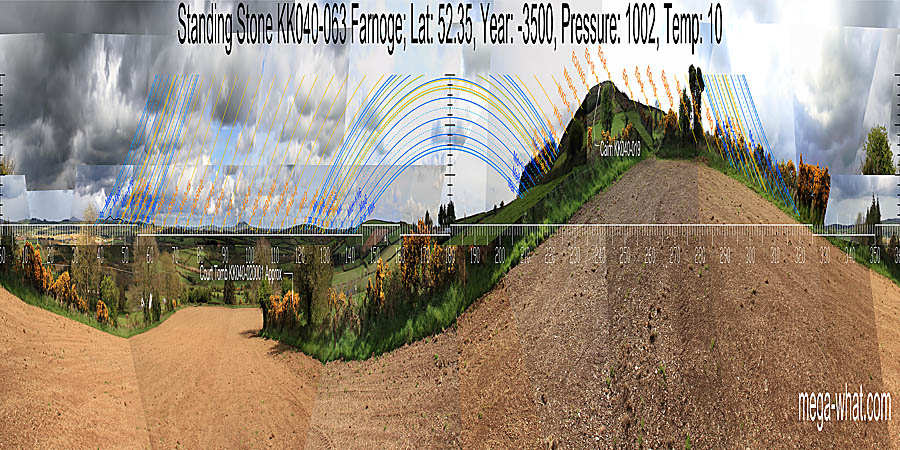 North is at a break in distant high ground, left of a dip. The stone axis seems to be about 5° west of that and is here shown as it was before cattle knocked it.
North is at a break in distant high ground, left of a dip. The stone axis seems to be about 5° west of that and is here shown as it was before cattle knocked it.
South was therefore also indicated by the stone axis but is here shown after re-erection.
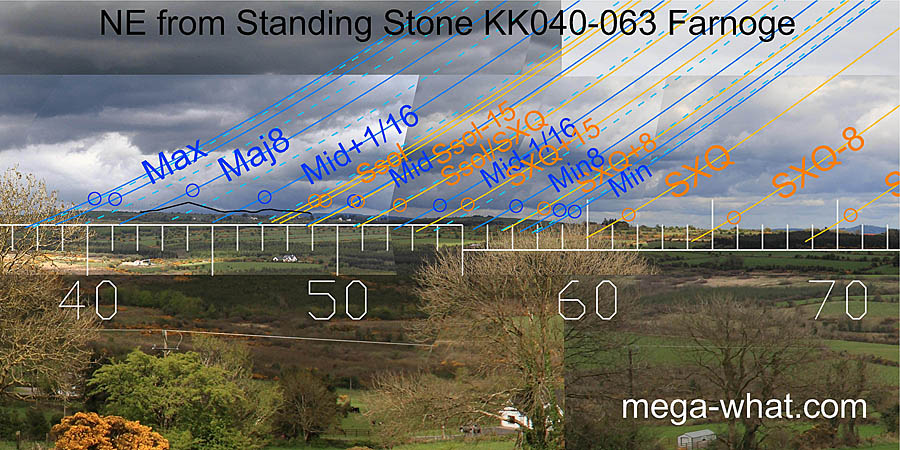 The north-eastern profile is better from here than the tomb with more of the distant mountains visible. Major standstillLunistice positions vary cyclically over an 18.6 year period but are fairly static for more than a year at either end of the range
is on a nearer hilltop as is the lunar minor eighth.
Lunar sixteenths are marked by dips while the solstice and cross-quarter are at the bottom of slopes.
The north-eastern profile is better from here than the tomb with more of the distant mountains visible. Major standstillLunistice positions vary cyclically over an 18.6 year period but are fairly static for more than a year at either end of the range
is on a nearer hilltop as is the lunar minor eighth.
Lunar sixteenths are marked by dips while the solstice and cross-quarter are at the bottom of slopes.
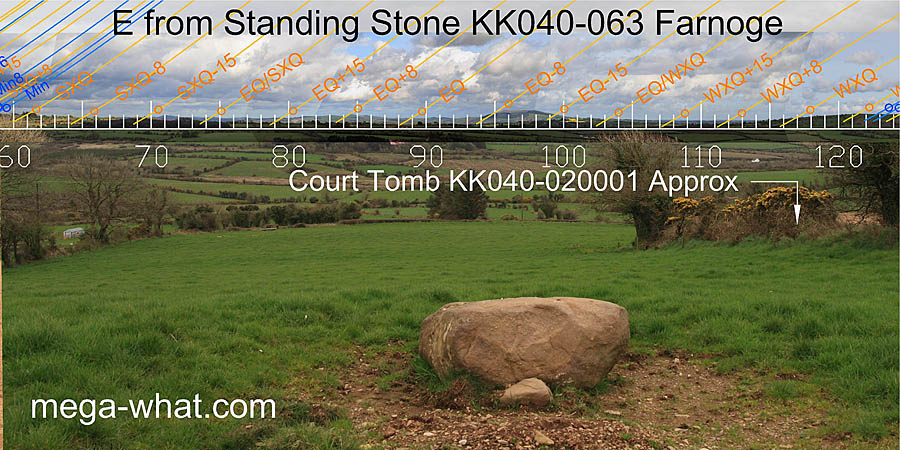 More of the distant skyline is visible eastwards as well, with the equinox in a dip and the quarter-months either side of it on hilltops.
More of the distant skyline is visible eastwards as well, with the equinox in a dip and the quarter-months either side of it on hilltops.
 Views to the south-east are very similar from both sites but from here the dip is wider with more of the distant ground visible.
Views to the south-east are very similar from both sites but from here the dip is wider with more of the distant ground visible.
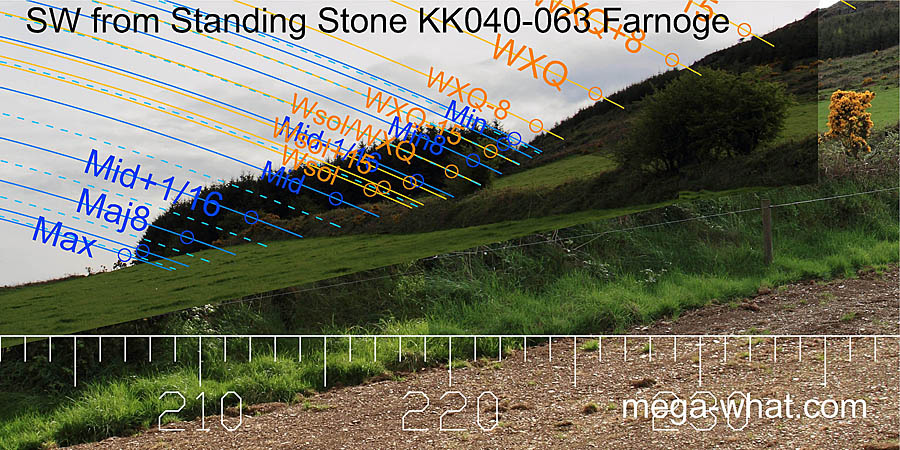 The south-western lunisticeLunistices are the most northerly and southerly moons of the month. The lunar equivalent of solstices - more.
range is on the lower slopes of the hilltop with the standstillsLunistice positions vary cyclically over an 18.6 year period but are fairly static for more than a year at either end of the range
indicated by breaks in the slope. Solstice looks to be in the vicinity of the basal step.
The south-western lunisticeLunistices are the most northerly and southerly moons of the month. The lunar equivalent of solstices - more.
range is on the lower slopes of the hilltop with the standstillsLunistice positions vary cyclically over an 18.6 year period but are fairly static for more than a year at either end of the range
indicated by breaks in the slope. Solstice looks to be in the vicinity of the basal step.
 Westwards, the Hilltop Cairn is a half-month north of the equinox with the edges of the hilltop both being quarter-months away from it.
The Stone's Axial perpendicular is now unreliable but approximately indicated due west and the Equinox / Summer Cross-Quarter midpoint.
Westwards, the Hilltop Cairn is a half-month north of the equinox with the edges of the hilltop both being quarter-months away from it.
The Stone's Axial perpendicular is now unreliable but approximately indicated due west and the Equinox / Summer Cross-Quarter midpoint.
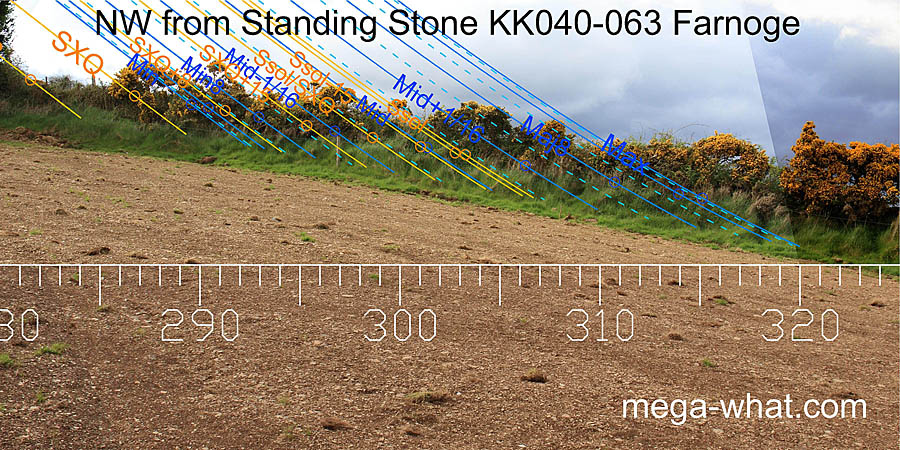 The north-west is obscured by a field boundary but would have been a smooth local slope in any case.
The north-west is obscured by a field boundary but would have been a smooth local slope in any case.
This Standing Stone could be contemporary with the Court Tomb but is more likely to be a later, bronze age, addition.
To more directly compare the two sites Click Here.
References
- Archaeological Survey of Ireland, record details. www.archaeology.ie/archaeological-survey-ireland
